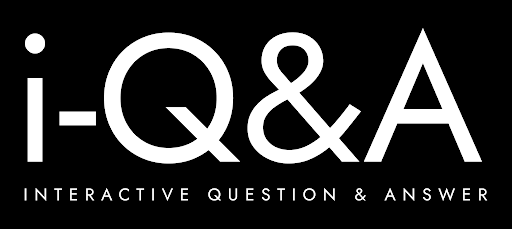
Ever wondered if your business is getting enough leads each day—or just spinning its wheels chasing numbers?
It’s one of the most common questions sales and marketing teams face. Yet, there’s no universal answer that applies to every business. The number of leads you should aim for isn’t something you can pick from a chart—it depends on who you are, what you sell, and how your sales process works. So instead of obsessing over random benchmarks, let’s focus on building a smarter, sustainable lead strategy that works for your specific setup.
Quantity vs Quality: Are You Chasing the Wrong Metric?
The chase for volume often masks a bigger issue: lead quality. Imagine two companies—one pulls in 100 leads a day but converts just 1%. Another gets only 20 leads but converts 25% of them. Who’s doing better?
It’s not about how many contacts you’re collecting—it’s about how many turn into customers.
When you push for volume over relevance, you risk flooding your sales team with prospects who aren’t ready to buy—or worse, were never a good fit in the first place. That leads to wasted time, stressed teams, and missed revenue.
The smarter move? Start with your business goals and work backward.
Start With Sales Goals—Then Do the Maths
Before setting a daily lead target, understand what you’re trying to achieve. Ask yourself:
- What’s our monthly or quarterly sales goal?
- What’s the average deal size?
- What’s our lead-to-sale conversion rate?
Let’s do a quick calculation.
Example:
- Sales Goal: £100,000
- Average Deal: £1,000
- Conversion Rate: 10%
You’ll need:
100 sales → which means
1,000 leads → across your sales cycle
From there, you can break it down into daily goals based on your sales team’s capacity.
The Daily Lead Number: It’s Not One-Size-Fits-All
Your industry plays a major role in setting expectations.
- Tech/SaaS (B2B): 10–20 strong leads a day might be more than enough—especially when targeting enterprise clients with long buying cycles.
- Retail/Consumer: 50+ leads a day could be necessary just to stay competitive in a fast-moving space.
What matters more than raw numbers is whether your team has the capacity to properly follow up with each lead.
Know Your Limits: The Database Turnover Formula
Here’s where reality sets in. Even if your team gets 100 leads per day, they probably can’t follow up with all of them effectively.
Use the Database Turnover Formula to calculate a manageable working database—the number of leads your reps can consistently contact over a 90-day period.
Example:
- 10 contacts/day
- 5 days/week = 50 contacts/week
- 4 weeks = 200 contacts/month
- 3 months = 600 leads
600 becomes your active working database. That’s the number of leads you can reliably manage. Anything beyond that should go into a nurturing pool for later re-engagement.
Working Leads vs Nurturing Leads
Not every lead should be treated equally. Divide your database into two clear groups:
- Working Leads: Actively interested, recently engaged, or showing buying intent. These need regular follow-up every 30–90 days.
- Nurturing Leads: Cold or long-term prospects who aren’t ready to buy. Keep them warm through newsletters, occasional check-ins, and retargeting ads.
This structure prevents burnout and ensures no opportunities fall through the cracks.
Effective Outreach Methods: It’s All in the Execution
Lead generation isn’t about blanketing inboxes or relying on one channel. It’s a blend of tailored outreach, content, and strategic follow-up.
Cold Emailing Done Right
Cold emails still work—when done properly. The secret? Personalisation and relevance.
- Verify email addresses
- Use short, compelling subject lines
- Reference something specific (a recent article, shared contact, or news)
- Add a clear and direct call to action
- Keep the message concise and focused on value
LinkedIn Outreach
For B2B sectors, LinkedIn is gold—when used as a conversation starter, not a pitch fest.
- Optimise your profile first
- Engage with posts before sending messages
- Use filters to find decision-makers
- Tailor every message to the recipient
Content and Inbound Strategies
Content still drives inbound lead generation. Regular blog posts, gated whitepapers, and webinars can attract qualified leads to you—without the cold outreach.
Pair this with paid ads, SEO, and active social media engagement to scale your reach.
Events and Trade Shows
If your team is attending industry events, aim for 20 leads per rep per day. Use digital lead capture tools, tag leads by interest level, and prioritise post-event follow-ups within 48 hours.
Follow-Up Strategy: Where the Magic Happens
Generating a lead is just step one. The follow-up determines whether they convert.
- Reach out within 48–72 hours
- Use multichannel outreach (email, phone, LinkedIn)
- Offer something new with each touchpoint (not just “checking in”)
- Pay attention to their behaviour (e.g. multiple email opens = higher urgency)
Touchpoint Tip: It typically takes 5–8 contact attempts to convert a lead. Don’t give up after the first “no.”
Key Metrics to Watch
If you’re not measuring, you’re guessing. The best teams track:
- Open Rates – Are your messages being seen?
- Response Rates – Are people replying?
- Conversion Rates – Are leads becoming customers?
Use CRM software to keep track of activity, schedule reminders, and refine your messaging.
Common Pitfalls to Avoid
Even experienced teams fall into predictable traps:
- Focusing on volume instead of conversion
- Relying on a single outreach channel
- Ignoring segmentation
- Sending generic or irrelevant messages
- Overloading reps with unmanageable lists
Avoid these by setting clear boundaries, testing your campaigns, and prioritising quality over noise.
Industry-Specific Insight: SaaS Leads
In the SaaS space, numbers vary:
- SMBs: 10–50 leads/day depending on deal size
- Enterprise: 5–15 high-value leads/day can be sufficient
For low-ticket SaaS, lean on automation and inbound content. For high-ticket items, personal touch and relationship-building matter more.
Keep track of your:
- Customer Acquisition Cost (CAC)
- Lifetime Value (LTV)
- Average Deal Size
These numbers tell you how much a lead is worth—and how much you can afford to invest in generating them.
2025 Trends: Where Lead Gen Is Headed
Recent data shows that the average business collects 1,877 leads per month, but only 2.9% convert. That’s a lot of wasted potential.
To stay ahead, most businesses in 2025 are turning to:
- Email marketing platforms
- Automation and CRM systems
- SEO tools and analytics
- Social media schedulers
Automation is now standard—but using it effectively requires human oversight. It’s not a shortcut. It’s a tool for consistency.
Final Word: Cut the Guesswork, Build a System
Forget random lead targets and start using real data to build a strategy. Here’s your checklist to get started:
- Define your sales goal
- Calculate how many leads you actually need
- Use the database formula to limit your active list
- Segment and prioritise
- Track key metrics and test regularly
Lead generation is no longer a numbers game—it’s a process that thrives on structure, clarity, and consistency.
FAQs
How do I calculate how many leads I need per day?
Use this formula:
Sales Goal ÷ Average Sale = Sales Needed
Sales Needed ÷ Conversion Rate = Leads Required
How often should I follow up with a lead?
Between 5–8 touchpoints across 1–2 weeks is standard. Let engagement guide your timing.
What’s a good conversion rate?
For qualified leads, 10–20% is a solid benchmark.
Should I automate lead generation?
Yes—but only if it feels human. Use it to scale, not replace, personalised outreach.
Quick win to improve lead generation today?
Segment your lead list and tailor one new campaign to one audience group. Personalisation drives real results.
Need to build a more reliable lead generation system?
Visit i-Q&A and book a call with our experts. We’ll help you assess your targets, define realistic lead numbers, and create a process your team can stick to. No more guesswork—just smarter, data-driven growth.
